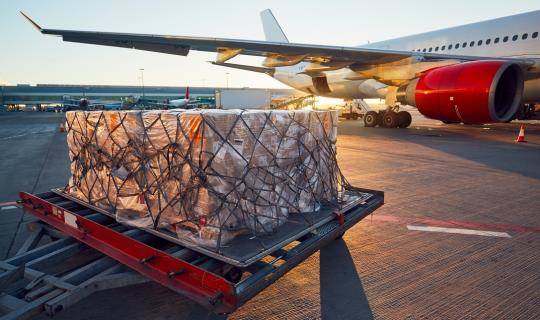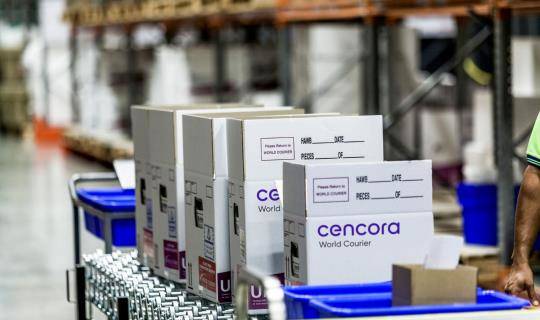Reducing supply chain complexity with vendor consolidation
By Paula Pulsoni
How to increase efficiency, reduce costs, and boost resilience
Pharmaceutical supply chains have grown more complicated. The growth of emerging markets, the development of advanced, personalized therapies, and a move towards globalization have all contributed to an increasing level of complexity in storing and transporting pharmaceutical products and ancillaries – at every stage of the product lifecycle.
In the main, pharma companies have tackled this complexity organically, responding to emerging needs as they have arisen. Often, this has resulted in fragmented supply networks that are costly, inefficient, and – as the COVID-19 pandemic has underlined – unable to withstand disruptive shocks.
The pandemic is not the only reason to re-evaluate supply networks, but it has provided a catalyst, instigating a prevailing counter-trend to consolidate pharma logistics vendors – streamlining operations, and strengthening supply chains in the process.
There are clear benefits to reducing supply chain complexity in this way, but there are pitfalls to be careful of. Handled incorrectly, the positives of consolidation can be blunted, or even render supply chains more susceptible to disruption.
Here we examine the case for vendor consolidation, before tackling the risks along the way – integration can be as much a hazard as it is a solution – and how to overcome them.

The case for vendor consolidation
Global supply chains have tended towards
complexity in every sector, but perhaps none more so than pharma. A quick
analysis of clinical trials conducted in emerging and strategic economies shows
that 31% of phase two and three trials run in two countries or more and 7% run in over ten countries,
with a maximum of 29. The average number of countries involved in multi-country
studies is seven.1
And the top 10 fastest growing trial
territories do not include large markets (except China) demonstrating the
growing importance of emerging markets where infrastructure is often less
robust than in more established locations.2
For most pharma companies, the networks
required to serve these markets have developed piecemeal. Either by acquiring
companies in each territory – which retain their existing logistics suppliers –
or by deploying a decentralized model where regional subsidiaries handle their
own logistics management.
Even where expanding global footprints have been managed more methodically, it may have been impossible to connect the dots without employing a diverse vendor base comprising highly local, siloed partners – especially as the onus has shifted to localizing storage and supply hubs.
The costs of fragmentation
Piecemeal supply networks achieve their
objectives: Products get to where they need to go. But such intricacy comes at
a cost.
The burden of governance is multiplied by the number of vendors and nodes in the network. For example, storage facilities must be audited regularly, according to a strictly regulated process – with all the resources, time, and expenses that involves. Vendor training, performance reviews, and issue resolution must be conducted separately for each partner.
There is the simple administrative burden of maintaining multiple points of contact. Five phone calls take longer than one. Especially with a diversity of services, requirements, standards, and terms between each partner, amplifying the effort required to ensure smooth operation.
And as the COVID-19 pandemic has exposed, fragmented supply chains can be vulnerable to shock, and sluggish to respond. The more links there are in the chain, the greater the chance that one of them will break – and the greater the resources needed to redirect the network.
The benefits of consolidation
Consolidating to a core network of
vendors, each managing multiple supply lanes and storage facilities, has clear
benefits.
If feasible, a coherent global network with provable standardized procedures and quality management system may only require a single audit. Initial logistics governance for a multinational clinical trial could be completed much faster than usual, significantly reducing set-up costs, and minimizing ongoing administration.
Integrated logistics vendors tend to be more efficient internally, as well, with knock-on efficiencies for the pharma company, CRO, or biotech company employing them. There are potential economies of scale, as well as the ability to more effectively align on strategic objectives – deploying changes via one contact.
And the better integrated the network, the better integrated the data. If all distribution and storage is handled by a single carrier, there will be a single data portal, providing an instant, real-time view of worldwide inventory, which can have a profound impact on a pharma company’s ability to manage global stocks.
In sum, consolidated supply chains offer reduced costs, greater agility, and greater control – all of which can have profound implications for the wider organization.

The pitfalls to watch out for
However, merging pharma logistics
vendors isn’t always as easy as it sounds. There are three major pitfalls that can, at
best, blunt the impact of consolidation, and at worst, lay the foundations for
future failure.
Hidden fragmentation
The first major pitfall to avoid is
hidden fragmentation. In many cases, global logistics vendors have grown
similarly to pharma companies – ad hoc and piecemeal, adding localized partners
in each new territory as they expand.
This means that although they present the appearance of a contiguous global network – conferring many of the cost and administration benefits of consolidation – the inefficiency of fragmentation is still present.
Disruption is still a risk. And governance can still be a challenge if this localized network isn’t as standardized as its branding.
Fuzzy accountability
In a similar vein, many layers of
subcontracting can also present a risk – and may be hidden from view.
If a vendor subcontracts to another carrier, and they also subcontract, and so on, not only are you left without a clear idea of who is physically carrying your consignment – and whether their performance meets your requirements – but it can be difficult to pin down who is responsible if something does go wrong.
This kind of fuzzy accountability re-introduces many of the same risks as fragmentation, even if you only have one point of contact.
Weakness in homogeny
The third pitfall
to avoid is putting all your eggs in one basket. Placing your faith in a single,
integrated global vendor can be just as dangerous as fragmentation if the
appropriate contingencies aren’t in place.
We operate a cohesive worldwide shipping and storage network, operating with the same procedures, to the same standards, at every single location. But we do so using a failsafe model. There are contingencies in place at every node, and for every supply lane – employing third parties where necessary – to ensure that if the ‘main’ network is disrupted, there is always an alternative.
This failsafe network ensures our clients experience the efficiencies of consolidation, while being protected by the strength of diversity.

Striking a balance
The benefits of consolidating vendors
are clear, and it is a strategy that World Courier entirely supports.
However, as the pitfalls discussed above demonstrate, it is important to strike a balance between too much fragmentation and not enough: The middle ground between the agility and efficiency of integration, and the contingencies of heterogeneity. A balance we believe we have achieved internally.
Pharma companies are wise to consolidate. But they would do well to gather evidence of true integration in consolidated vendors, as well as the protections in place to counter disruption.
Discover how much you could save by
consolidating vendors. Contact
us today.
1 From analysis of clinicaltrial.gov data concerning non-EU and
non-US trials, June 9th 2021
2 From analysis of clinicaltrial.gov data concerning non-EU and non-US trials, June 9th 2021





